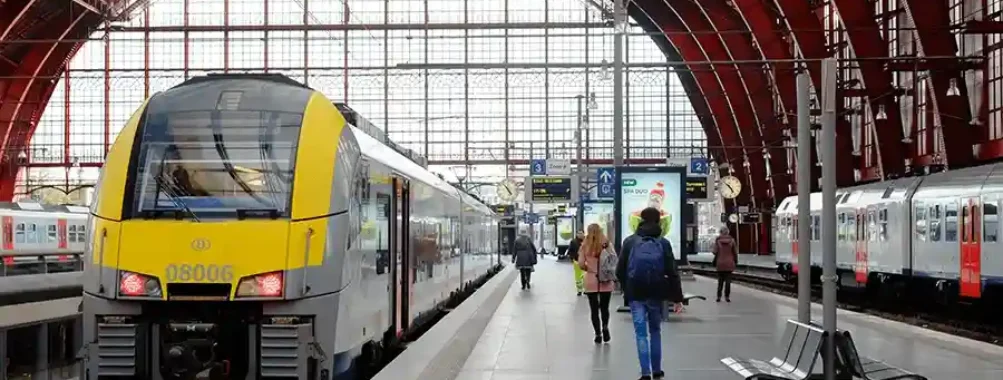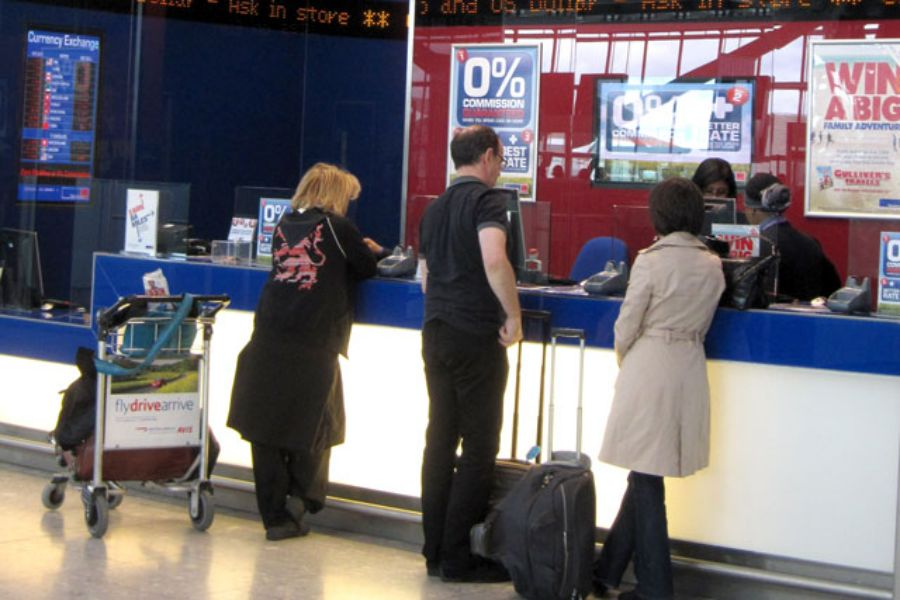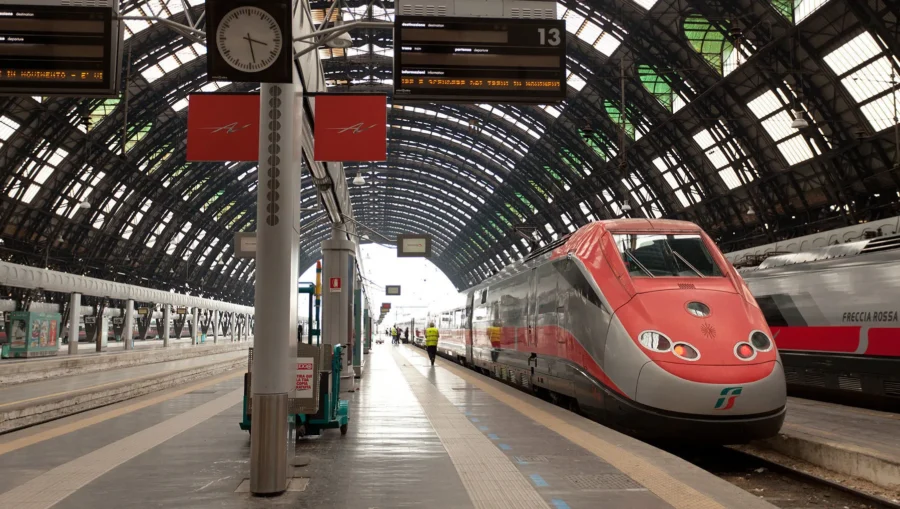
Rail Pass vs Point to Point Europe: Save Money & Travel Smarter in 2025
Planning a train trip through Europe? It’s honestly a bit of a puzzle. You’re staring at two main options: a rail pass, which gets you unlimited travel for a set number of days, or point-to-point tickets for each journey.
If you’re zigzagging across countries and want flexibility, a rail pass usually makes sense. But if you’re the kind who likes to lock in plans early, those individual tickets can save you a bundle.
I’ve tried both, and honestly, it boils down to how you like to travel. If you’re the spontaneous type who decides over breakfast whether you’ll end up in Paris or Prague, that freedom is worth something. On the other hand, if you don’t mind locking in dates and times, you can scoop up some shockingly cheap fares.
Table of Contents
- Key Takeaways
- Understanding Rail Passes and Point-to-Point Tickets
- What Is a Rail Pass?
- What Are Point-to-Point Train Tickets?
- Key Differences Between Rail Passes and Individual Tickets
- How Rail Passes Work in Europe
- Types of Rail Passes: Global, One-Country, and Regional
- Who Can Buy a Eurail or Interrail Pass?
- How to Use a Rail Pass for Train Travel
- How Point-to-Point Tickets Work
- Booking Train Tickets in Advance vs. On the Spot
- Advance-Purchase Discounts and Fare Types
- Flexibility and Restrictions with Individual Tickets
- Comparing Costs: Rail Pass vs Point-to-Point Tickets
- When a Rail Pass Saves You Money
- When Point-to-Point Tickets Are Cheaper
- Hidden Fees and Reservation Costs
- Factors to Consider for Your European Itinerary
- Number of Train Travel Days
- Countries and Distances Covered
- High-Speed Trains and Reservation Requirements
- Convenience, Flexibility, and Travel Experience
- Spontaneity vs. Structured Planning
- Ease of Travel Between European Train Stations
- Extra Perks and Bonuses with Rail Passes
- Frequently Asked Questions
- What are the key differences between Eurail and Interrail Passes for train travel in Europe?
- How do I determine if a rail pass is more cost-effective than point-to-point tickets for my itinerary?
- What are the benefits of choosing a Britrail Pass over individual train tickets in Europe?
- Can you explain the flexibility and travel options provided by the Eurail Global Pass for a month-long trip?
- What should I consider when deciding between a rail pass and point-to-point tickets for multiple European countries?
- Where can I find the best deals for European train passes and how do they compare to buying individual tickets online?
- Book Your Dream Experience
- More Travel Guides
Key Takeaways
- Rail passes are best for flexible, multi-country adventures
- Point-to-point tickets shine for fixed plans booked ahead
- Watch out for extra fees and reservation requirements
Understanding Rail Passes and Point-to-Point Tickets

If you’re hopping on trains in Europe, you’re picking between a rail pass or individual tickets. Each one fits a certain style, and the right answer depends on where you’re headed, how often you’ll ride, and how much flexibility you want.
What Is a Rail Pass?
A rail pass—think Eurail Pass for non-Europeans or Interrail Pass for Europeans—lets you ride multiple trains across one or more countries for a set number of days.
You’ll find passes for just one country or a group of them. Some give you continuous days of travel, while others let you pick your travel days within a longer window.
The real perk? Flexibility. In most countries, you can just hop on trains without booking ahead. But in places like France, Italy, and Spain, you still need seat reservations on high-speed trains, and those come with extra fees.
Rail passes can be a solid deal if you’re crossing long distances or want to visit several countries quickly. If you’re staying in one area or just taking a couple of short rides, you might be paying for more travel than you’ll actually use.
What Are Point-to-Point Train Tickets?
Point-to-point tickets are exactly what they sound like: tickets for a specific journey, like Paris to Lyon or Rome to Florence.
You can buy them at stations, online, or with train apps. Book early—especially for high-speed routes—and you’ll often score big discounts. The catch is, those cheap fares are usually non-refundable and tied to a specific train.
If you know your exact travel dates and don’t mind sticking to them, this is the way to go. They’re perfect for short hops within one country, especially where regular fares are already low—like regional trains in Italy or local lines in Spain.
If you like to linger in a city and decide later where you’re headed, you can buy tickets on the day, but expect to pay more.
Key Differences Between Rail Passes and Individual Tickets
Here’s a quick side-by-side for clarity:
| Feature | Rail Pass | Point-to-Point Ticket |
|---|---|---|
| Flexibility | High (but may need reservations) | Low if booked in advance |
| Best For | Multiple long trips, multi-country travel | Short trips, fixed itineraries |
| Upfront Cost | Higher | Varies per trip |
| Booking | Often no need unless high-speed | Required for each journey |
| Savings Potential | Good for frequent travel | Good for early planners |
Whenever I’ve zigzagged across borders every few days, passes have been a lifesaver. But if I’m just bouncing between a couple of cities, they’re not worth it. Be honest about your travel style—the answer usually gets pretty clear.
How Rail Passes Work in Europe

A rail pass lets you hop on multiple train journeys within a set timeframe, often across different countries. It can save you money and planning headaches if you’re bouncing between cities a lot. But you need to know the types, who can buy them, and how they actually work once you’re there.
Types of Rail Passes: Global, One-Country, and Regional
You’ve got three main flavors, and they’re not all created equal.
- Eurail Global Pass – Lets you travel in up to 33 countries. If you’re crossing borders a lot, this is your ticket.
- One-Country Pass – Only good in a single country, like Italy or France. Perfect if you’re staying put.
- Regional Pass – Covers a cluster of neighboring countries, like France–Spain or Germany–Benelux.
I’ve used the Global Pass when I wanted zero commitment to a set route. But if you’re just doing Spain and Portugal, the regional pass is cheaper and less hassle.
Heads up: high-speed and overnight trains often still require seat reservations, and you’ll pay extra for those.
Who Can Buy a Eurail or Interrail Pass?
It’s pretty simple: Eurail Pass is for non-European residents, and Interrail Pass is for Europeans. Coverage is almost the same, but it all depends on your official country of residence, not citizenship.
So, if you’re from the U.S., Canada, or Australia, you’ll be looking at Eurail. If you live in France or Germany, Interrail is your route.
You can pick up passes online—Rail Europe, Eurail’s site, or even through travel agents. Sometimes agencies can help if your route is complicated.
Pro tip: buy before you arrive in Europe. You’ll rarely find passes at train stations once you’re there.
How to Use a Rail Pass for Train Travel
Using a pass isn’t just “show up and ride.” You need to activate it—either online or at a ticket office—before your first trip.
Most passes work on a travel days system. For example, a “5 days in 1 month” pass lets you take unlimited trains on any five days within that month. You pick the days as you go.
For some trains (especially high-speed ones like TGV or AVE), you must book a seat in advance. You can do that online or at the station, and it’s usually a small extra cost.
Keep your pass and ID handy. Conductors will check both, and sometimes they’ll ask you to fill in your travel date before you board.
How Point-to-Point Tickets Work

Point-to-point train tickets are for a specific journey between two stations, usually locked to a set date and time. They’re a cheap and straightforward way to travel if you’re only planning a handful of rail trips or sticking to shorter distances.
They sound simple, but when and how you buy them—and which fare you pick—can make a big difference in cost and flexibility.
Booking Train Tickets in Advance vs. On the Spot
Buying European train tickets early can lock in lower fares, especially for high-speed or long-distance routes. Some countries release tickets 60–90 days ahead, and the cheapest seats go fast.
Traveling from Paris to Milan? Book weeks ahead and you might save enough for a splurge meal. But there’s a catch—advance tickets usually come with more restrictions.
If you’re more spontaneous, buying at the station gives you freedom. In places like Italy or on regional lines in Spain, same-day fares can be close to advance prices. You can compare options online through train ticket booking platforms before you commit.
I’ve done both—once I booked early and saved enough for a killer dinner, another time I paid more just to keep my options open. The “right” choice really depends on how set your plans are.
Advance-Purchase Discounts and Fare Types
High-speed trains like France’s TGV or Spain’s AVE offer advance-purchase discounts—sometimes 30–60% off—but you have to pick a specific train and time.
You’ll see different fare categories:
- Standard/Full Fare – Flexible, refundable, usually the most expensive.
- Semi-Flexible – Some changes allowed, partial refund.
- Non-Refundable – Cheapest, but no changes or refunds.
Discount tickets can vanish quickly, especially in peak season. I’ve watched Rome–Florence fares jump from €19 to €50 overnight just because I hesitated.
If you know your travel dates, check prices on sites like Expedia train fares before the cheapest tier disappears.
Flexibility and Restrictions with Individual Tickets
Point-to-point tickets can be flexible or super strict, depending on the fare and country. In some places, standard tickets let you ride any train that day, as long as you don’t backtrack. Others lock you into one specific departure.
Flexibility matters if your plans might change or you want to make stopovers. A full-fare Paris–Milan ticket might let you hop off in Lyon, but a discounted ticket probably won’t.
I’ve learned the hard way—miss a non-changeable train, and you’re buying a whole new ticket. If you’re unsure about timing, maybe catching a train after a flight, it’s safer to pay a bit more for flexibility.
Some travelers mix and match: cheap advance tickets for the fixed parts, flexible tickets for days when plans are up in the air. That’s a smart way to balance cost and freedom.
Comparing Costs: Rail Pass vs Point-to-Point Tickets

The price difference really comes down to how far, how often, and how last-minute you travel. Shorter regional hops usually favor single tickets, while long-distance, multi-country trips can make a pass worth it—if you use it enough days to justify the upfront cost.
When a Rail Pass Saves You Money
A rail pass can be a smart buy if you’re covering a lot of ground in a short time. For example, hopping between Paris, Berlin, and Rome within a week can add up fast with individual fares—especially if you buy them last minute.
It also works well if you want the freedom to change plans. You can decide in the morning where you’ll end up by night, without stressing over price jumps. That flexibility can be worth it, especially in peak months when last-minute fares get ugly.
If you’re under 28, youth discounts on Eurail Passes can really help. And if you’re traveling in high season, you might dodge the sticker shock of buying expensive long-distance tickets at the station.
When Point-to-Point Tickets Are Cheaper
If you’re traveling at a slower pace—maybe a week in Italy with just a few city-to-city hops—point-to-point tickets usually win. Routes like Rome to Florence or Florence to Venice can be shockingly cheap if you book early.
European rail operators often release tickets months ahead, and advance-purchase discounts can be huge. I’ve scored cross-border trips for under €30 just by booking a couple months out.
This option is best for travelers with fixed itineraries. If you know your dates and times, you can lock in low fares and spend the savings on better meals or maybe a nicer hotel you stumbled across while browsing cheap travel deals.
Hidden Fees and Reservation Costs
Here’s something a lot of travelers don’t realize: buying a rail pass doesn’t mean every train ride is suddenly free. High-speed trains like France’s TGV or Spain’s AVE usually require seat reservations, and those can run anywhere from €10 to €35.
Night trains? They’ll tack on surcharges for sleeping compartments. Alone, these fees aren’t outrageous, but if you’re stringing together several premium trains, they add up surprisingly fast.
Point-to-point tickets don’t have those pass-specific reservation fees, but if you buy at the last minute, you might pay more than the daily value of a pass. Always check both options before you lock anything in—sometimes the “deal” isn’t what it seems.
Factors to Consider for Your European Itinerary

How much value you squeeze out of a Eurail Global Pass or point-to-point tickets really depends on your travel style, where you’re headed, and which trains you’ll ride. Even tiny tweaks to your route or schedule can tip the scales.
Number of Train Travel Days
If your trip only includes two or three train rides, a full rail pass probably isn’t worth it. You’ll end up paying for days you never use.
But if you’re catching trains every other day—or even daily—the pass can start to pay for itself. That’s especially true if you hate being tied to rigid departure times.
Ask yourself: do you like settling into one city for a week, or do you get itchy feet after a couple days? If you’re always on the move, those single tickets add up fast.
I’ve definitely bought a pass thinking I’d be crisscrossing the continent, only to linger longer in certain places. In hindsight, point-to-point tickets would’ve saved me a chunk of cash.
Countries and Distances Covered
If you’re bouncing between several countries—France, Germany, Switzerland, maybe even more—a Eurail Global Pass can be a lifesaver. You won’t have to juggle tickets from different rail operators.
But if you’re sticking to just one country, like Italy or Spain, a one-country pass or early-bird tickets can be much cheaper. Short hops usually mean lower fares if you book ahead.
Longer routes, like Paris to Vienna, can get expensive last minute. That’s where a pass really shines. But for short jumps—Florence to Pisa, say—a single ticket is often impossible to beat.
Don’t forget, some borders have fewer direct trains. Sometimes it’s actually easier (and faster) to fly or grab a bus for certain stretches.
High-Speed Trains and Reservation Requirements
High-speed trains—Eurostar from London to Paris, France’s TGV, Spain’s AVE—almost always need a seat reservation, even for pass holders. Expect to pay €10 to €35 per reservation.
If your route depends on high-speed trains, factor those extra costs in. They can eat into your savings before you know it.
Regional trains often don’t need reservations, so you can just hop on whenever you’re ready. That’s perfect for those unplanned travel days.
Traveling in peak season? Book those high-speed reservations as early as you can. Trains do sell out, and having a pass won’t help if there’s no seat left.
Would you like me to break down cost examples for different types of trips next? Numbers really help make these choices clearer.
Convenience, Flexibility, and Travel Experience

Your decision between a rail pass and point-to-point tickets really comes down to how much freedom you want, your planning style, and the kind of trip you’re after. The way you move between stations, and the little perks that come with some passes, can totally shape your travel vibe.
Spontaneity vs. Structured Planning
If you love waking up and picking your next destination on a whim, a rail pass is probably your best friend. You can just jump on most regional trains without booking ahead and see where the rails take you.
But there’s a catch. High-speed lines like France’s TGV or Italy’s Frecciarossa still require reservations, and those cost extra. It’s more flexible than fixed tickets, but not a total free-for-all.
Point-to-point tickets are perfect if you’re cool with locking in your travel plans. Booked early, they’re often much cheaper, but changing your mind later can get pricey. I’ve had to shell out double for a last-minute ticket—definitely not fun.
During peak travel times, last-minute fares can get ugly. In those cases, a rail pass can save you from both sticker shock and sold-out trains.
Ease of Travel Between European Train Stations
Most European train stations sit right in the city center, so you step off and you’re instantly in the thick of it. With a rail pass, you can often skip ticket lines—just flash your pass and board.
If you’re hopping between countries quickly, this convenience is hard to beat. No language barriers, no fumbling with ticket machines in a rush.
Point-to-point tickets can be just as smooth if you’ve booked ahead and know your platform. But buying on the spot means queuing, comparing fares, and figuring out unfamiliar systems. That can chew up precious travel time, especially if you’re on a tight schedule.
For multi-stop adventures, the pass can feel like “set it and forget it.” Fixed tickets, though, demand more admin and attention as you go.
Extra Perks and Bonuses with Rail Passes
Rail passes sometimes unlock discounts on ferries, buses, or even museum entry. These perks vary by country, but if you use them, the savings add up.
You might score deals on scenic boat rides or special tourist trains. I’ve even landed cheaper day tours just by showing my pass when booking guided activities.
Some passes cover night trains, which can save you a hotel night and get you to your next city by sunrise. Just don’t forget—most night trains still need a reservation, even if your pass covers the ride.
Point-to-point tickets rarely come with these kinds of extras. You pay for a single ride, and that’s it. If you want perks, you’ll need to hunt them down separately.
Frequently Asked Questions
Planning train travel in Europe? Your choice between a rail pass and point-to-point tickets will shape your budget, your flexibility, and honestly, how relaxed you feel during your trip. The right answer depends on your route, how often you’re moving, and whether you love spontaneity or prefer structure.
What are the key differences between Eurail and Interrail Passes for train travel in Europe?
Here’s the quick version: Eurail is for non-European residents, Interrail is for Europeans. Both cover the same networks and offer similar pass types, but only certain people can buy each one.
If you live outside Europe, you’ll want Eurail. If you’re a European resident, Interrail is your go-to. The perks and rules are nearly identical otherwise.
How do I determine if a rail pass is more cost-effective than point-to-point tickets for my itinerary?
First, map out your routes and travel days. Then, check advance prices for each leg—fast and long-distance trains are way cheaper if you book early.
If the total for individual tickets is less than a pass, skip the pass unless you need flexibility. Passes really shine when you’re changing cities every day or two.
What are the benefits of choosing a Britrail Pass over individual train tickets in Europe?
The Britrail Pass only works within Britain—not mainland Europe. Its main draw is unlimited travel for a set period, which is awesome if you’re zigzagging between cities or love spontaneous day trips.
You also avoid the hassle of buying a ticket for every single ride—perfect if you hate planning every detail in advance.
Can you explain the flexibility and travel options provided by the Eurail Global Pass for a month-long trip?
With a Eurail Global Pass, you can roam through most European countries on pretty much any day within your pass period. For a month-long adventure, you can go for continuous travel or pick a set number of travel days in that month.
It’s perfect if you like to change plans on the fly. You could wake up in Florence, decide on Munich by dinner, and not worry about last-minute ticket prices.
What should I consider when deciding between a rail pass and point-to-point tickets for multiple European countries?
Check how many borders you’ll cross and how long each leg is. International high-speed trains can get expensive, so a pass might save you money—just remember you’ll still need to pay for seat reservations on some routes.
If you’ve got a fixed plan, advance point-to-point tickets are almost always cheaper. If you crave flexibility, the pass is worth a closer look.
Where can I find the best deals for European train passes and how do they compare to buying individual tickets online?
Let me tell you, those official sites—Eurail, Interrail, Britrail—sometimes surprise you with flash sales or seasonal discounts. If you poke around travel agencies, you might stumble on bundles that toss in perks like ferry crossings or even a cheeky museum pass.
Honestly, you should always peek at the national rail websites first for point-to-point tickets. They usually post the rock-bottom advance fares before anyone else does.
Here’s a trick I’ve picked up after years of zigzagging across Europe: don’t feel like you have to pick just one method. Mixing a pass for the long hauls and grabbing single tickets for short hops can actually save you more than you’d think.



